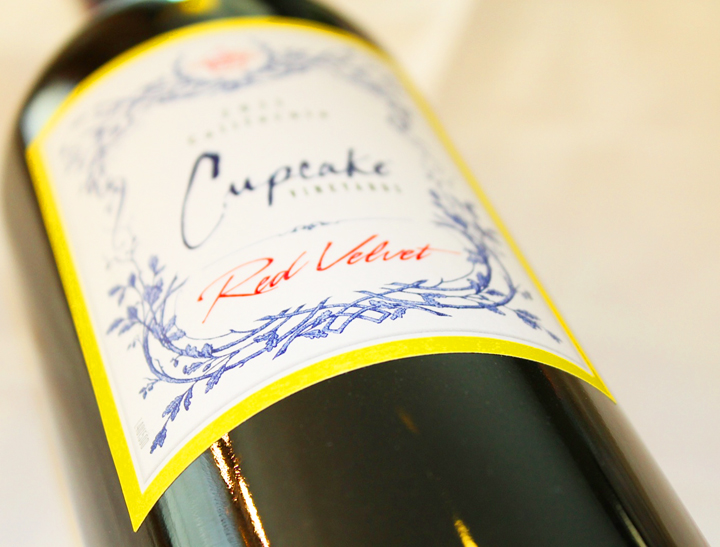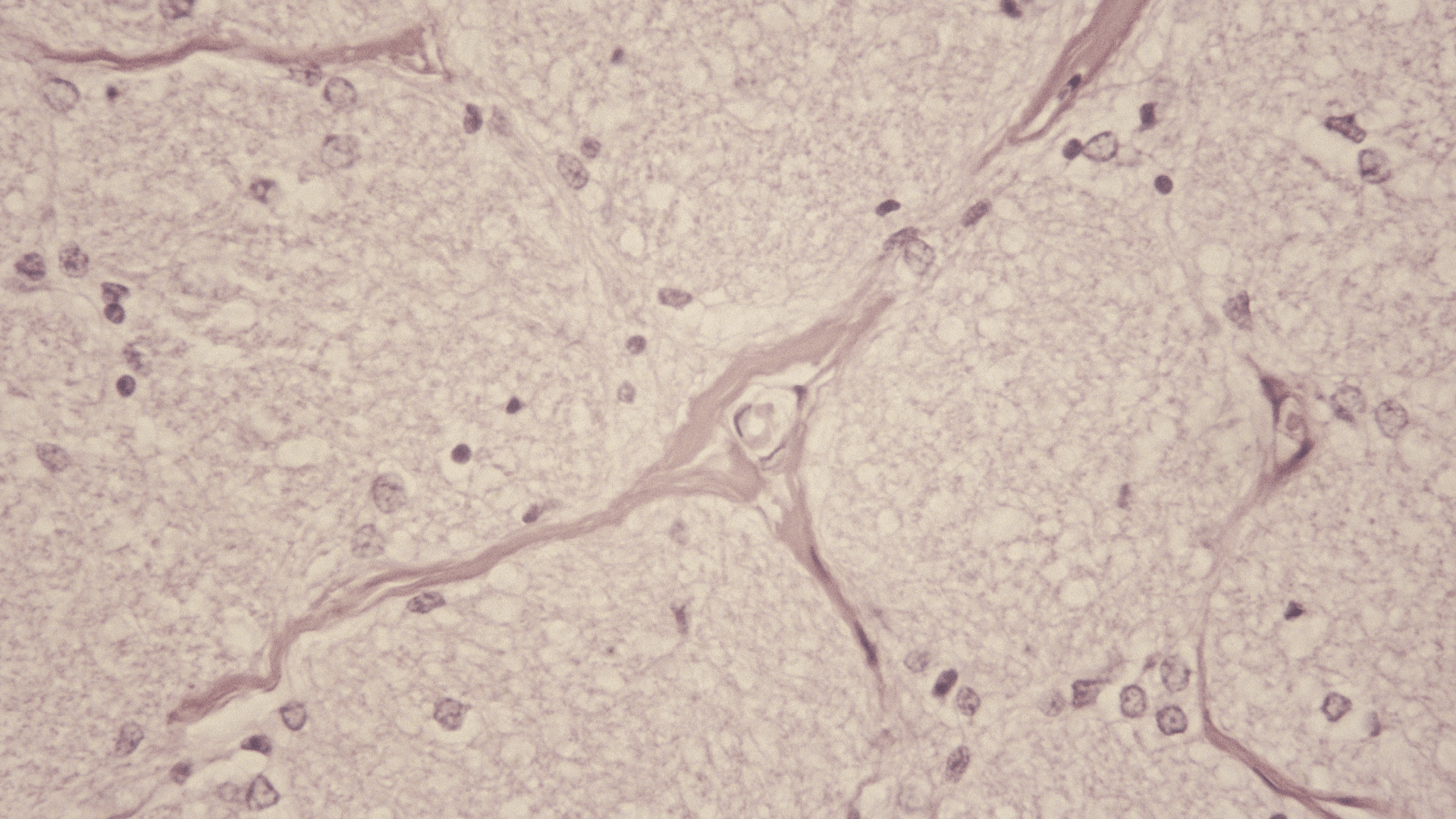“What is the best gut healing diet?” Oh, if I only had a nickel (heck, even a penny) for all the questions surrounding this one.
Here’s my new response to the question, “What is the best gut healing diet?”
All the diets, plans, and protocols will be meaningless until you understand how they apply to you, as an individual.
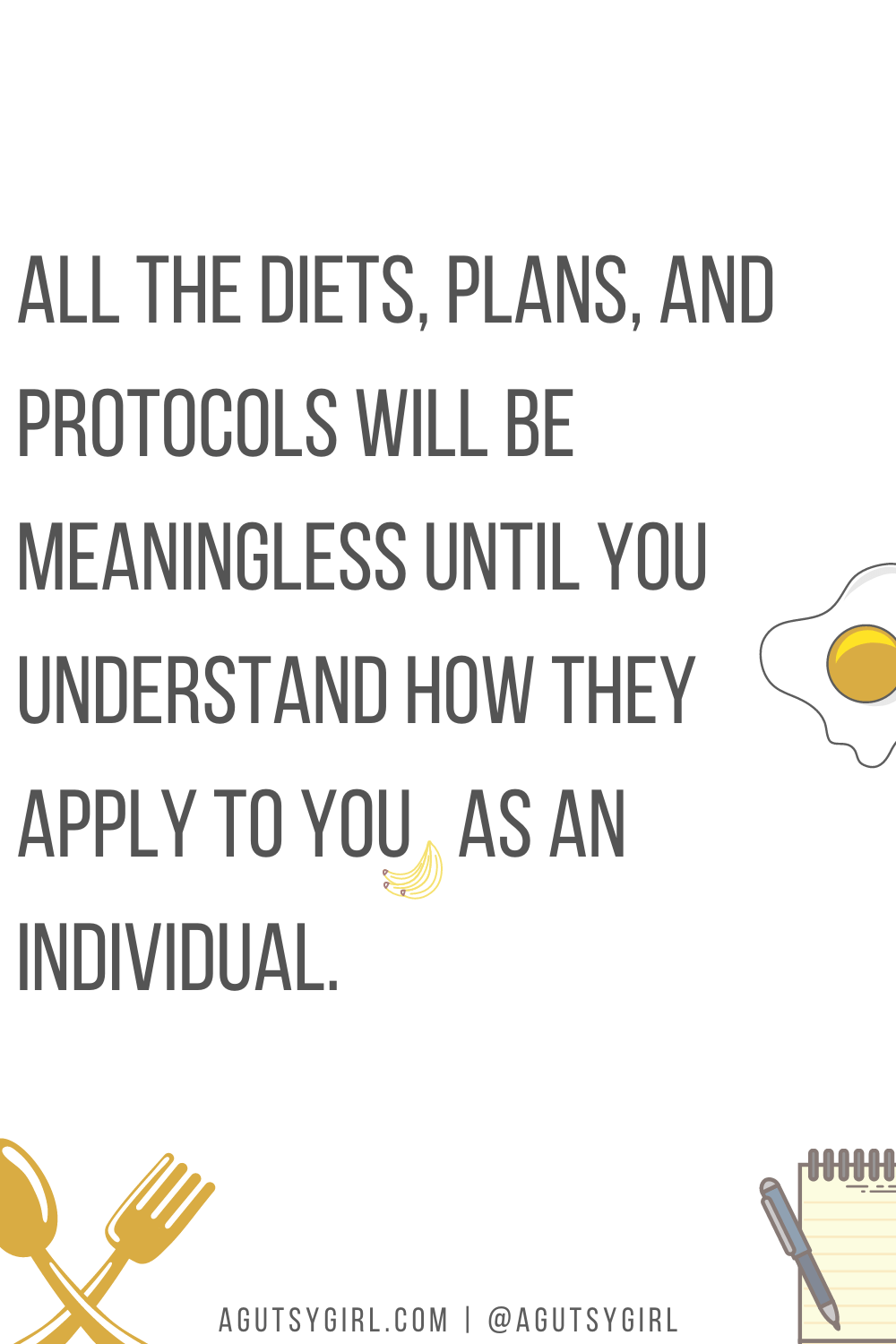
The only way you do that is through trial-and-error.
And no, no I don’t even believe anymore that the diet followed should always be synonymous with the testing result. (Caveat: sometimes it is, though. For example, you have Celiac Disease. Then, yes. 100% yes, you must follow a gluten-free diet.)
In other words, using the same Celiac example, you might need to follow a more Paleo-approach for several weeks to several months for faster healing. You also might not.
I don’t know.
What is the Best Gut Healing Diet
Click HERE to save this post for later.
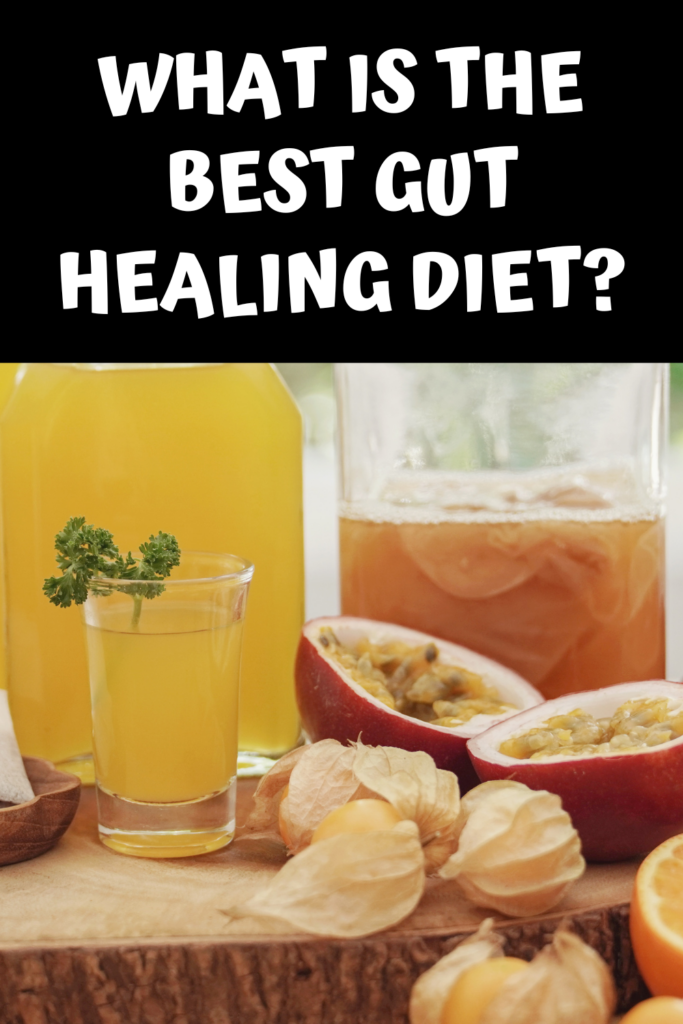
The point is that, even though there are gut healing diet templates galore, there is not one that is the best across the board.
And you know what?
This is exactly why I created my 90-day gut healing journal system, Healing Blooms from Within.
No matter what gut healing diet you (or your nutritionist, doctor, best friend, coach, or Mother) deem best will only work when you understand how it applies to you and your individualized makeup.
I promise.
So there are two steps to this.
2 Steps to Understanding the Best Gut Healing Diet for You
Click HERE to save these 2 steps for later.

- Choose whatever you think (or you’ve been recommended to follow) is going to be the best gut healing diet.
Go all in on it for at least 2 – 3 weeks. (I honestly think more like 30 days. However, if, after 21 days you are not seeing any progress in any way, it might truly not be for you. i.e. strict Vegan or Keto) Stay consistent. Follow the book, guide, plan, etc. as it is written for the best chance at understanding if it’s right for you. See below for 26 gut healing diets to consider.
- Get a journal to track it all so that you understand how that specific protocol is working for you.
Yes, you can chicken-scratch your way through it or even try to create your own gut healing journal with my free Bullet Journal tutorial. Or, you can grab the essential gut healing tool I’ve been creating now for a decade+, with everything spelled out for you, ready to hit the ground running.
Now, here are 26 gut healing diets to consider.
26 Gut Healing Diets to Consider
Click HERE to save these for later.
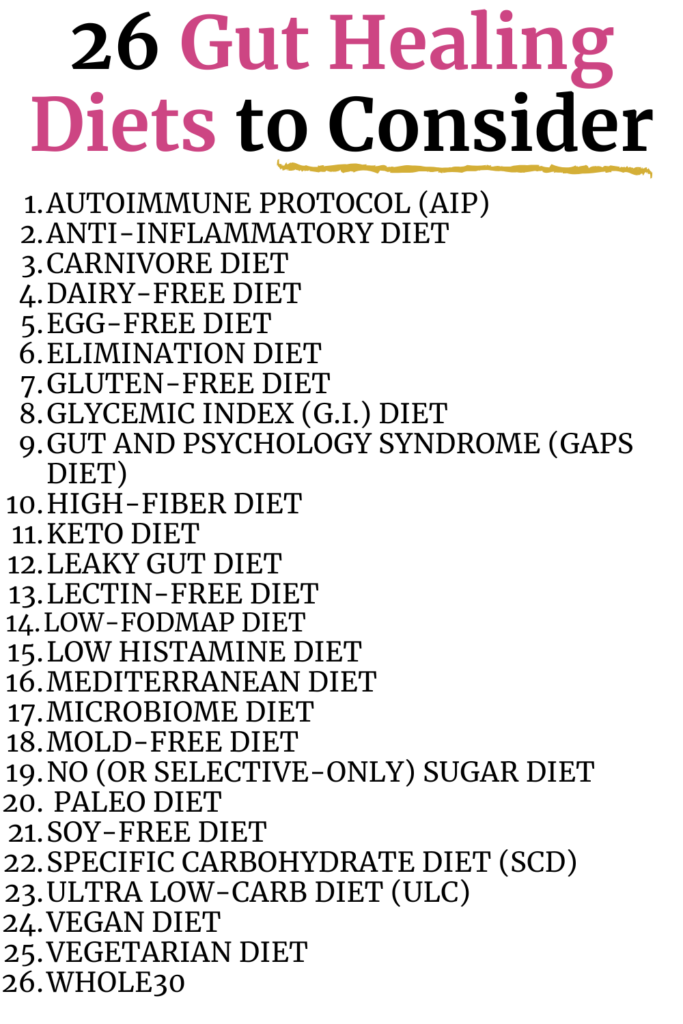
Note: I am giving very brief information on each of the diets below.
If I have written about the particular diet in more detail on this website, I’ll link to it for your convenience. If there is a diet I have not yet written about in detail, feel free to contact me HERE to request it.)
By the way, this whole list and more can be found in my book, A Gutsy Girl’s Bible: a 21-day approach to healing the gut. In the book, you’ll be able to drill down to the diet that works for you by starting with over 100+ Creations like THIS.
Grab your copy on Amazon HERE.
Or, have this book at your fingertips instantly by downloading the PDF now.
- Autoimmune Protocol (AIP)
This was originally developed by Loren Cordain PhD, and popularized by Sarah Ballantyne PhD. You must avoid processed foods, refined oils and sugars, grains and pseudo-grains (like quinoa), gluten, legumes, soy, dairy, nightshades, non-nutritive sweeteners (like Stevia), eggs, nuts, seeds, alcohol. There is a 30-day elimination period, and then you begin reintroducing things. (Learn more HERE.)
- Anti-Inflammatory Diet
Low sugar, emphasis on fish over meat, healthy oils and fats. Focused on reducing inflammation that may cause weight gain and health problems.
- Carnivore Diet
Eat meat, fish, eggs and some dairy.
- Dairy-Free Diet
Consume nothing that contains dairy or its byproducts. (Check out this list of 100 Dairy Sources and Alternate Names.)
- Egg-Free Diet
Consume nothing that contains eggs or its byproducts. (Check out this list of 52 Egg Sources and Alternate Names.)
- Elimination Diet
An elimination diet involves removing “suspect” foods, and then later reintroducing them, one at a time. Simultanesouly, you’ll watch for symptoms that show a reaction. (Learn more about it HERE.)
- Gluten-Free Diet
Consume nothing that contains gluten or its byproducts. (Check out this list of 124 Wheat and Gluten Sources and Alternate Names.)
- Glycemic Index (G.I.) Diet
Choose foods that are low on the glycemic index, which measures how quickly foods are digested.
- Gut and Psychology Syndrome (GAPS Diet)
Created by Natasha Campbell-McBride. Avoid processed foods, refined oils and sugars, grains, gluten, some lentils, soy. But you’re still allowed to have things like nuts, peanuts, some sweeteners, some dairy (in fact it’s encouraged). There is a lot of emphasis on bone broth and fermented foods. (You can learn more HERE.)
- High-Fiber Diet
Plant-based plan that challenges popular keto and paleo diets, from an award-winning gastroenterologist. Check out Fiber Fueled: The Plant-Based Gut Health Program for Losing Weight, Restoring Your Health, and Optimizing Your Microbiome.
- Keto Diet
High fat, moderate protein, very low carb. (Check out Will the Keto Diet Help if I Have SIBO?)
- Leaky Gut Diet
A diet that promotes digestive health and focuses on vegetables, fruits, fermented vegetables, cultured dairy products, healthy fats, and lean, unprocessed meats. It moves through phases of elimination and then re-introduction. I know a decent amount about this diet, as I wrote The Leaky Gut Meal Plan: 4 Weeks to Detox and Improve Digestive Health.
- Lectin-Free Diet
Eliminate foods that contain lectin, a plant protein that may be connected to inflammation in the body. (Learn more about lectins and other antinutrients HERE.)
- Low-FODMAP Diet
The low-FODMAP diet is paying attention to the classification of foods known as FODMAPs. FODMAP stands for Fermentable Oligosaccharides, Disaccharides, Monosaccharides, and Polyols, which are short chain carbohydrates and sugar alcohols that are poorly absorbed by the body. If and when they are poorly absorbed, abdominal pain and bloating can surface. (Learn more about FODMAPs HERE and/or grab Reasonable SIBO to understand in further detail.)
- Low Histamine Diet
Follow a diet which is low in histamine. These foods to avoid include things like: fermented foods, wine, leftover meat, citrus fruits, most berries, and eggs. (Learn more about Histamine Intolerance HERE.)
- Mediterranean Diet
Plant, not meat-based; healthy fats are prioritized. Daily consumption of vegetables, fruits, and whole grains. Includes a variety of foods which build a stronger microbiome. (Learn more with Mediterranean Diet for Gut Health.)
- Microbiome Diet
Based on on eating and avoiding certain foods in the hopes of restoring gut health.
- Mold-Free Diet
The idea is that molds are everywhere and are disrupting the microbiome for those with mold-illness. The four categories of food to exclude on this diet include: Gluten, acellular carbohydrates (ex. dried up grains and seeds, flours, pulverized and liquid forms of starches and sugar, which are more present in the modern world diets) and refined sugar, dairy, and industrial seed oils
- No (or selective-only) Sugar Diet
Cut sugar out of your diet completely (some plans even include foods with naturally occurring sugars, such as fruit.) (Learn more with an experiment I did: 21 Days with No Sugar.)
- Paleo Diet
Eat like a caveman, focusing on lean meats and fish, nuts and seeds, fruits and vegetables. Avoid dairy, sugar, legumes and grains.
- Soy-Free Diet
Consume nothing that contains soy or its byproducts. (Check out this list of 73 Soy Sources and Alternate Names.)
- Specific Carbohydrate Diet (SCD)
This diet was created by Dr. Sidney Haas, but popularized by Elaine Gottschall. SCD is, “based on the theory that by eliminating most carbs (primarily grains, starches, dairy, and sugars) and allowing only specific carbs that require minimal digestion, it can reduce inflammation and make eating enjoyable for people with gastrointestinal (GI) disorders.” On the diet, you should avoid all grains, beans, legumes, sugar, most dairy, starchy vegetables and non-grain flours, fermented beverages, and even chocolate/cacao. (Learn more HERE.)
- Ultra Low-Carb Diet (ULC)
This can take on several different meanings (including Keto). Healthline has a great article about 8 Popular Ways to Do Low Carb.
- Vegan Diet
Eat only plant-based foods, including omitting anything that has any connection to animals, including eggs, milk or gelatin. (Learn more with The Kind Diet with SIBO.)
- Vegetarian Diet
No meat, no fish, and no poultry. Some animal by-products are still allowed (i.e. eggs and honey). (Learn more with Can You Heal Your Gut on a Vegetarian Diet?)
- Whole30
Eat whole foods only—foods that are not processed or refined— for 30 days. (Learn more with 9 Reasons I’m a Whole30 Dropout.)
Additional Healing Diets and Protocols to Consider
For many of you, you’re trying to combine 1-3 protocols.
That’s okay, but it can be very tricky.
Make sure you’re working with someone on navigating the combined protocols.
And for others of you, you are not looking for a ‘gut’ healing specific diet, but instead a diet that addresses something else.
For example, Beyond the Pill by Dr. Jolene Brighten is a 30-day program which aims to balance your hormones, reclaim your body, and reverse the dangerous side effects of the birth control pill.
I have placed (and will continue to place) many of these on the Master Gutsy Resource Spreadsheet. (You’ll find them under the tab, ‘Healing Books + Protocols.’)
Also on the spreadsheet tab you’ll find books I love and recommend (or have been recommended to me) that fit various diets from above.
And that, darling, is how you’ll find the best gut healing diet for you.
If you liked this post, you might also enjoy:
Xox,
SKH
🤰 bloating be gone! weight loss through optimal gut health for women
💃ʜᴇᴀʟ ʏᴏᴜʀ ɢᴜᴛ. ʜᴇᴀʟ ʏᴏᴜʀ ʟɪfe.
🫶🏻 founder gutbyome.com

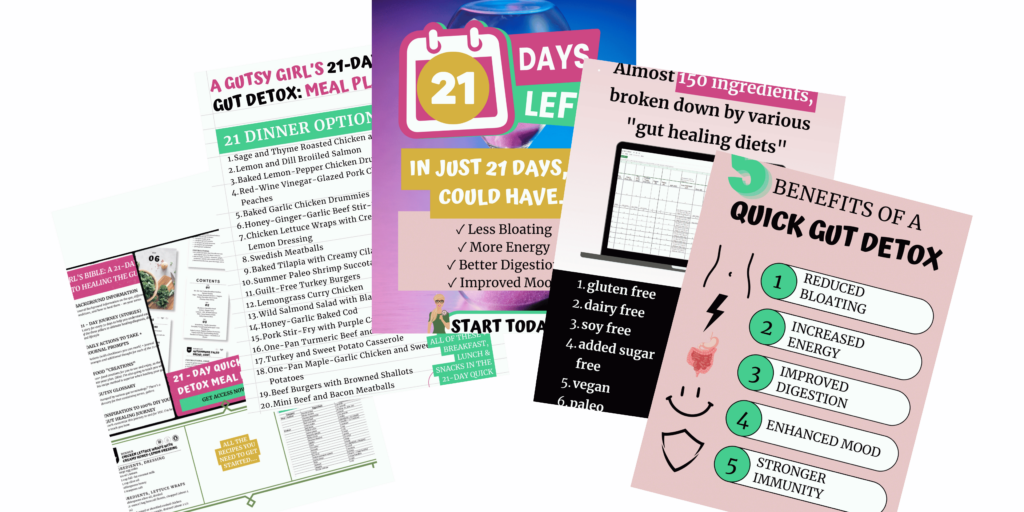


![Soluble vs Insoluble Fiber [Printable Soluble Fiber Foods Chart]](https://agutsygirl.com/wp-content/uploads/2020/03/fiber-carbohydrates-featured-agutsygirl.com_.png)
